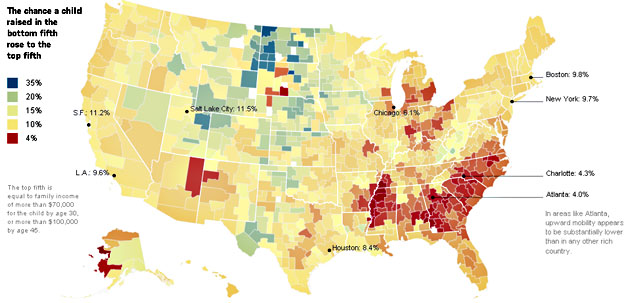David Leonhardt of the New York Times presents this map today, based on a new paper about intergenerational mobility. Basically, the authors find that in some regions, poor kids have a decent chance of growing up and moving out of poverty. In other regions, poor kids pretty much stay poor forever.
There are several regions that are above and below average, but the obvious outlier is the deep South. This is yet another reminder of a lesson from politics: never look solely at nationwide data. Politically, this means that the South votes fundamentally differently from everyone else. Working class whites, for example, aren’t actually a big problem for Democrats. Only Southern working class whites are a big problem. When it comes to mobility, apparently the same thing is true. If you look solely at nationwide trends, you’ll miss the fact that one particular region is way, way different than the others. Poor kids don’t exactly have a great chance in life no matter where they live, but in the South, they have almost no chance at all. If you take a look at the policy preferences of Southern governors and legislatures, that’s apparently exactly the way they like it.














